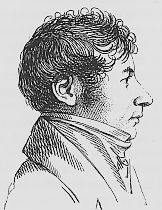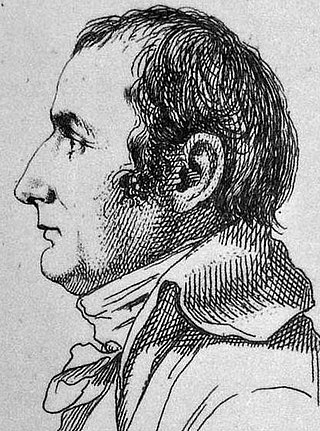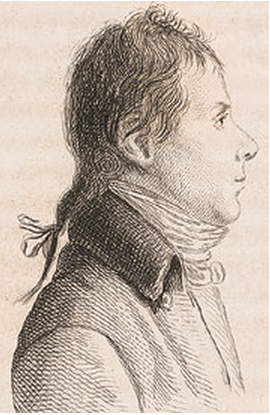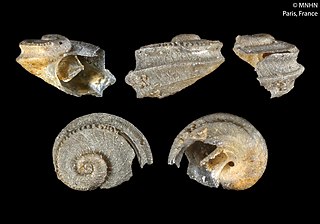Explorations
| | This section is empty. You can help by adding to it. (July 2010) |
| |||
|---|---|---|---|
| +... | |||
The year 1809 CE in archaeology included many events, some of which are listed below.
| | This section is empty. You can help by adding to it. (July 2010) |
| | This section is empty. You can help by adding to it. (July 2010) |
| | This section is empty. You can help by adding to it. (July 2010) |
| | This section is empty. You can help by adding to it. (July 2010) |
| | This section is empty. You can help by adding to it. (July 2010) |
| | This section is empty. You can help by adding to it. (July 2010) |
Al-Maqrīzī was a medieval Egyptian historian and biographer during the Mamluk era, known for his interest in the Fatimid era, and the earlier periods of Egyptian history. He is recognized as the most influential historian of premodern Egypt.

Guillaume-Antoine Olivier was a French entomologist and naturalist.
In ancient Egypt, cats were represented in social and religious scenes dating as early as 1980 BC. Several ancient Egyptian deities were depicted and sculptured with cat-like heads such as Mafdet, Bastet and Sekhmet, representing justice, fertility, and power, respectively. The deity Mut was also depicted as a cat and in the company of a cat.
Description de l'Égypte is the title of several books.

The Description de l'Égypte was a series of publications, appearing first in 1809 and continuing until the final volume appeared in 1829, which aimed to comprehensively catalog all known aspects of ancient and modern Egypt as well as its natural history. It is the collaborative work of about 160 civilian scholars and scientists, known popularly as the savants, who accompanied Bonaparte's expedition to Egypt in 1798 to 1801 as part of the French Revolutionary Wars, as well as about 2000 artists and technicians, including 400 engravers, who would later compile it into a full work. At the time of its publication, it was the largest known published work in the world.

Edme-François Jomard was a French cartographer, engineer, and archaeologist. He edited the Description de L'Égypte and was a member of the Institut d'Egypte established by Napoleon. He supervised the educational and cultural mission sent to France from Egypt by Muhammad Ali of Egypt. He was a pioneer in the area of History of Cartography.

Pierre Jacotin (1765–1827) was the director of the survey for the Carte de l'Égypte , the first triangulation-based map of Egypt, Syria and Palestine.

The Institut d'Égypte or Egyptian Scientific Institute is a learned society in Cairo specializing in Egyptology. It was established in 1798 by Napoleon Bonaparte to carry out research during his Egyptian campaign and is the oldest scientific institute in Egypt. The building in which it was housed was burnt down, with the loss of many documents, during the Arab Spring unrest of 2011. It reopened in December 2012.

Smaragdia viridis. common name the "emerald nerite" is a species of small, green sea snail, a marine gastropod mollusk in the family Neritidae, the nerites.

Jean Vercoutter was a French Egyptologist. One of the pioneers of archaeological research into Sudan from 1953, he was Director of the Institut Français d'Archéologie Orientale from 1977 to 1981.

Jacques-Marie Le Père was a French civil engineer.
Sydney Hervé Aufrère is a French Egyptologist, archaeologist, and director of research at CNRS.

Sukashitrochus dorbignyi is a species of minute sea snail, a marine gastropod mollusk or micromollusk in the family Scissurellidae, the little slit snails.
Senusret IV Seneferibre was an ancient Egyptian Theban king during the late Second Intermediate Period that is attested only through finds from Upper Egypt. The chronological position of Senusret IV is unclear and even the dynasty to which he belongs is debated.
The memorial temple of Ramesses III at Medinet Habu contains a minor list of pharaohs of the New Kingdom of Egypt. The inscriptions closely resemble the Ramesseum king list, which is a similar scene of Ramesses II, which was used as a template for the scenes here.

The pyramid of Athribis was a small mudbrick pyramid located at Athribis in the southern Nile Delta, northeast of the modern city of Banha. It was located the furthest north of all the pyramids in ancient Egypt and the only known pyramid to have been built in the Delta.

Guillaume André Villoteau was a French musicologist.

The Search for Ancient Egypt is a 1986 illustrated monograph on the history of the rediscovery of ancient Egypt and of Egyptology. Written by the French Egyptologist Jean Vercoutter, and published by Éditions Gallimard as the first volume in their pocket collection "Découvertes". The book was awarded a literary prize by the Fondation de France in 1987.

Granulina isseli is a species of very small sea snail, a marine gastropod mollusk or micromollusk in the family Granulinidae.

Peplidium is a genus of flowering plants belonging to the family Phrymaceae. Its native range is Egypt to Sinai, Indian subcontinent, and Australia.